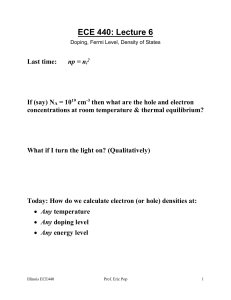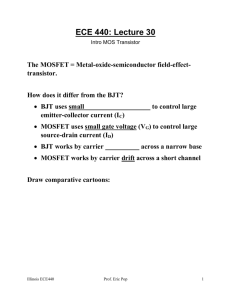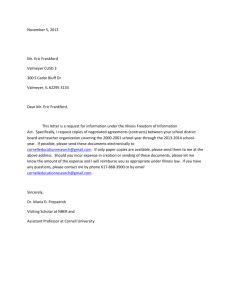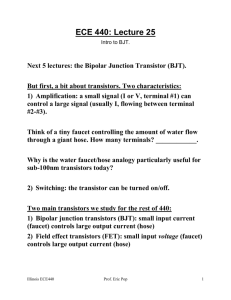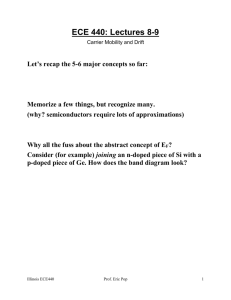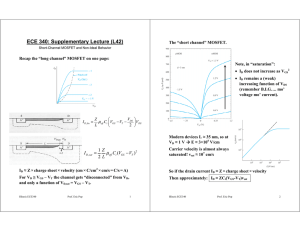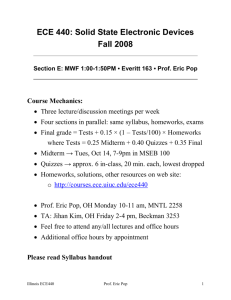L5_Doping
advertisement
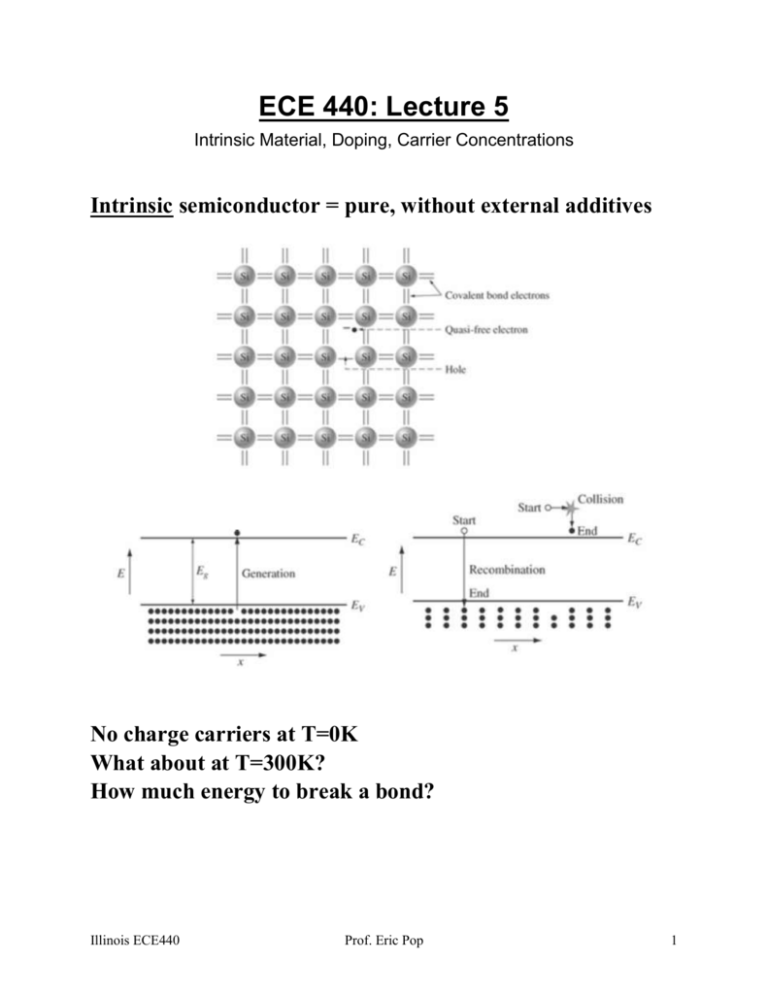
ECE 440: Lecture 5 Intrinsic Material, Doping, Carrier Concentrations Intrinsic semiconductor = pure, without external additives No charge carriers at T=0K What about at T=300K? How much energy to break a bond? Illinois ECE440 Prof. Eric Pop 1 What is created when a bond is broken by thermal agitation? How many? In thermal equilibrium, generation = recombination Simple probability: Recombination driven by… Generation intrinsically driven only by… Hence, the np product at thermal equilibrium: Illinois ECE440 Prof. Eric Pop 2 So what is np numerically? (a peek ahead) At room temperature (T=300K), intrinsic concentrations: ni ~ 2 x 106 electrons and holes per cm3 in GaAs 1 x 1010 cm-3 in Si 2 x 1013 cm-3 in Ge What about band gaps? How do these numbers compare with NA? With the number of silicon atoms per cm3 (x4 valence electrons per atom)? Q: Does an intrinsic semiconductor, at room temperature, spontaneously emit light? Why/not? What if temperature is increased? Illinois ECE440 Prof. Eric Pop 3 Manipulating carrier concentrations. Extrinsic material. Doping = purposely introducing impurities into the crystal. Donors and acceptors (of what?) Ex: compare number of valence electrons (e.g. 5 for As) with the number of electrons of the atom it replaces (e.g. 4 for Si). Illinois ECE440 Prof. Eric Pop 4 Arsenic (As) in Si: 4 electrons for bonding with neighbors. But, how loosely bound is that 5th electron that As brought into the Si lattice? Use approximation from N. Bohr’s model: m* q 4 EB 2K 2 2 (be careful with choice of m* and K) On homework: calculate Bohr radius, a.k.a. fuzzy electron orbit radius around donor atom. The real numbers for donors and acceptors in Si: Donor in Si Binding energy (eV) Acceptor in Si Binding energy (eV) Illinois ECE440 P 0.045 B 0.045 As 0.054 Al 0.067 Prof. Eric Pop Ga 0.072 Sb 0.039 In 0.16 5 How do these donor & acceptor binding energies look like in the band diagram model? Recall: thermal agitation energy ~ 3/2 kBT Illinois ECE440 Prof. Eric Pop 6 Extrinsic: N-type semiconductor = P-type semiconductor = Ex: What are the electron & hole concentrations in a Si wafer doped with 1015 cm-3 As atoms (at room temperature)? Is this n- or p-type Si? How much has the resistivity of Si changed from intrinsic? What if I increase the temperature by 60 oC? Illinois ECE440 Prof. Eric Pop 7
